Prescribing advice
Besieged by clinical negligence cases, changes to community care, and the threat of public inquiries, NHS lawyers are under ever increasing pressure, reports Emma Vere-Jones
Cases involving the National Health Service are always popular with journalists.
In the last month alone, two such stories hit the headlines.
The parents of a child with Goldenhar's syndrome - a condition that left her with a badly disfigured face - spent days battling with the trust overseeing Newcastle's Royal Victoria Infirmary over the treatment of their daughter.
At the same time, a 43-year-old woman paralysed from the neck down was fighting to have her life-support system switched off.
While such cases seem regularly to feature in the news, in reality just a tiny proportion of the claims against the NHS ever make the headlines.
Last year, the National Health Service Litigation Authority (NHSLA) received a total of 7,470 claims - 5,025 of which were clinical negligence actions.
The NHSLA is wary of saying that the number of claims is on the rise.
'It's impossible to calculate whether claims are increasing,' says David Towns, head of communications at the NHSLA.
'There's a whole host of things to take into account; for example, a claim may not be brought immediately.'
But clinical negligence lawyers maintain that claims are increasing.
'There's definitely an increase in litigation,' says Mark Scrivenger, a partner at niche Peterborough-based practice Scrivenger Seabrook.
Previously acting on behalf of the NHSLA, Mr Scrivenger now acts for claimants.
'Doctors are to some extent victims of their own success,' he continues.
'There is perhaps an over-expectation of what they can do.'
'Claims are increasing enormously year-on-year,' agrees a partner who is on the NHSLA panel and prefers not to be named.
He says this rise has been triggered by an increasingly litigious society, rather than a rise in the incidents of negligence.
'I'm convinced that this is not due to an increase in the amount of negligence itself,' he says.
'If anything, with the work the NHSLA has done on risk management and corporate governance duties, I would imagine the percentage of instances is decreasing.'
The Department of Health had been expected to release wide-ranging reforms of clinical negligence early this year, but this has yet to appear.
However, the NHSLA admits that its annual spend on claims has significantly increased, although, it says, this is largely owing to a rise in the size of damages claimed.
In 1999-2000, the NHSLA spent 386 million on settling claims, including legal costs, the last year for which figures are available.
The NHSLA has potential liabilities for clinical negligence of 4.1 billion.
In April 2001, the NHSLA slimmed down its legal panel in a major way, leaving just 15 firms receiving work: Barlow Lyde & Gilbert, Beachcroft Wansbroughs, Bevan Ashford, Brachers, Browne Jacobson, Capsticks, Eversheds, George Davies & Co, Hempsons, Hill Dickinson, Kennedys, Reynolds Porter Chamberlain, Vizard Oldham, Ward Hadaway, and Weightmans.
And the workload for the authority is set to increase.
As of 1 April, the NHSLA is dealing with all the clinical negligence claims brought against the service.
Previously, smaller claims had been dealt with by individual NHS trusts.
Each trust chose an excess level up to which it would take claims, For most, that level was in the range of 10-20,000, although some trusts dealt with claims up to 100,000.
But since the start of this month, all these claims have been handed over to the NHSLA.
This does not necessarily mean an increase in work for firms on the NHSLA's panel, says Mr Towns.
But it may mean a decrease for those firms acting for the trusts.
'Trusts don't have the same resources that we have.
They might have used outside solicitors to handle claims, which we might now want to do ourselves,' says Mr Towns.
'For firms handling NHS trust work, the amount of work could go down rather than up in terms of litigation.' The in-house team at the NHSLA has 50 staff handling claims.
But while the workload for the authority could increase, some say it is not as great as it might be.
Since large swathes of legal aid were replaced with conditional fee agreements, claimant lawyers say that valid claims are not being brought because insurers are not prepared to take the cases on at a reasonable cost.
'The insurance industry is frightened by clinical negligence,' says Mr Scrivenger.
'It's difficult getting insurance, even on the good cases, because the insurers are coming back with figures which are just ridiculous.
But actually the cases we bring are pretty bomb-proof.'
Of the applications that claimants' solicitors receive, only about 2% will go to trial, while 3% settle.
Some 90% are thrown out immediately, while 5% are weeded out after initial investigation if the case is not strong enough.
'You don't realise as a defendant that you only see a fraction of the applications,' says Mr Scrivenger.
He says that as a claimant lawyer, he has passed up cases which, if he had received them as a defendant practitioner, 'I would have said we'll have to settle this just because we can't get an insurer to cover it'.
He adds: 'The government whinges about the cost, but really they've had it easy.'
Another innovation that could reduce clinical negligence work is a pilot launched recently by the NHSLA and medical accidents resolution service Resolve.
The scheme is aimed at settling medical accident claims worth 15,000 or less out of court within six months (see [2001] Gazette, 6 December, 3).
Solicitors working under the scheme, which will involve at least 100 cases, will do ten hours' work for a capped fee of 1,500, which will cover assessing the merits of the claim and deciding a figure for damages.
Resolve will undertake initial evaluations of merits and damages, with the NHSLA having the final say on the agreed figure.
Action for Victims of Medical Accidents will provide help and advice to all claimants.
The firms taking part include Russell Jones & Walker, Scrivenger Seabrook, Irwin Mitchell, Boyes Turner, Gadsby Wicks, Thompsons, Cunningham John and Blake Lapthorn.
Clinical negligence aside, there has also been an increase in other NHS-related legal work.
'Clinical negligence, which was the bulk of our work, is now down to 40%,' says David Mason, a partner at south London firm Capsticks, which is known for its NHS work.
'It's not because we're doing any less of it [clinical negligence] - it's just the other work has grown and grown.'
One increase in work has resulted from changes to funding for community care under the Health and Social Care Act 2001.
In cases where people require home help, it must be decided whether the client will be covered by social services or by the NHS.
The issue can become blurred when deciding what constitutes 'nursing' and what constitutes 'home help'.
And in some instances the bill may need to be divided between the two services - in which case, it must be decided who pays what percentage.
'That's created a lot of work, we've spent a lot of time helping the NHS with eligibility criteria,' says Mr Mason.
'You may ask whether, if the state is paying for care, this really matters,' he continues, 'but social services charge on a means-tested basis - the NHS doesn't, it's free.
So it makes a big difference.'
The recent closure of a large number of learning disorder hospitals - which cared for people with acute disorders or mental disabilities - has also brought a lot of work.
Now the hospitals have closed, several clients are being moved to community care homes.
However, such moves may often be the subject of legal challenges.
'Not all relatives like this approach,' says Mr Mason, 'There has been a number of challenges brought by families to fend off a number of these moves.'
He predicts that yet another issue which looks set to 'come up and bite the NHS', and which it is not yet aware of, is inquiries.
If, for example, a psychiatric patient commits a murder in custody, the health authority traditionally holds a private and informal inquiry into the incident.
However, a recent ruling by the European Court of Human Rights suggests that these private inquiries may be in breach of the right to life under the Human Rights Act 1998 (article 2).
This covers inquiries which follow a person's death.
As a result, a lot more of these inquiries will have to be held in public.
'I think the Harold Shipman inquiry was originally going to be done in private,' Mr Mason says.
While there is no problem with the inquiries being public, the difficulty for the NHS will be cost, as those involved will need a much greater degree of legal representation.
Ironically, at the same time, the Department of Health has been trying to reduce the number of inquiries, but make those carried out more thorough.
Consequently, there is pressure from the human rights side to have more public inquiries, and pressure from the health department side to have more expensive inquiries.
'It's an evolving area of law and it's going to push towards much more of that type of work,' notes Mr Mason.
'It's something I don't think the NHS is expecting.'
On top of such changes, the NHS is also undergoing a massive restructuring, which also means work on lawyers' plates.
And that does not look like being finished any time soon.
'It's a complete shambles,' says one lawyer involved, 'and it's not helped by the fact that social services are doing the same thing at the same time.'
Emma Vere-Jones is a freelance journalist

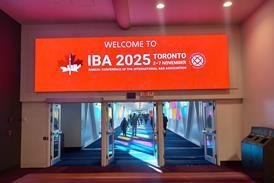

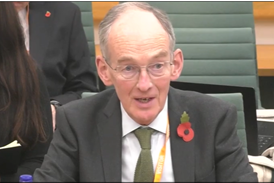

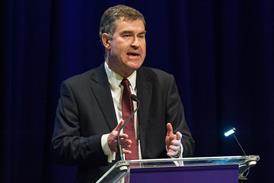


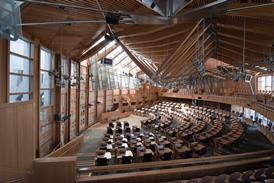
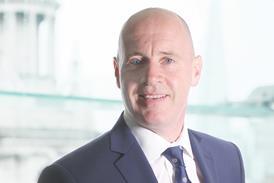







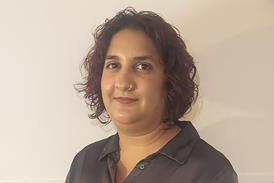

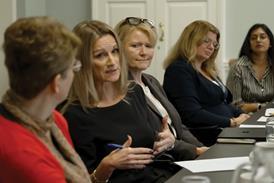







No comments yet